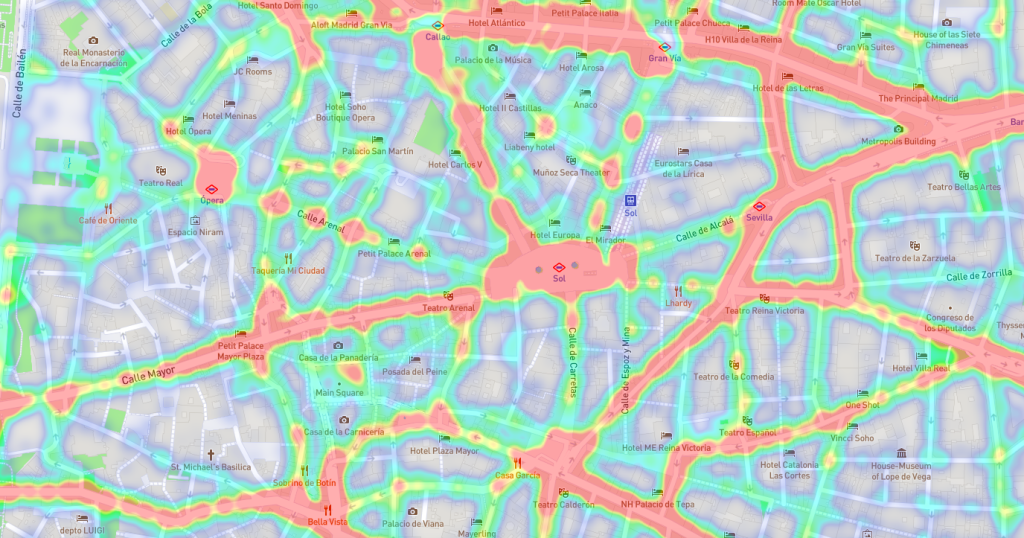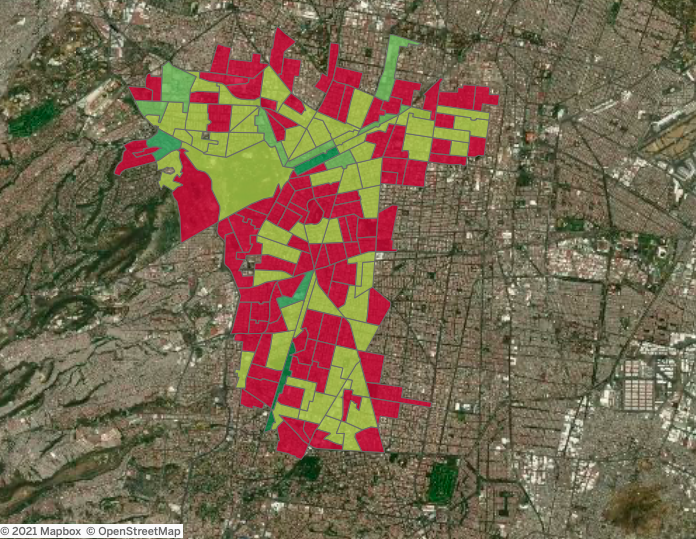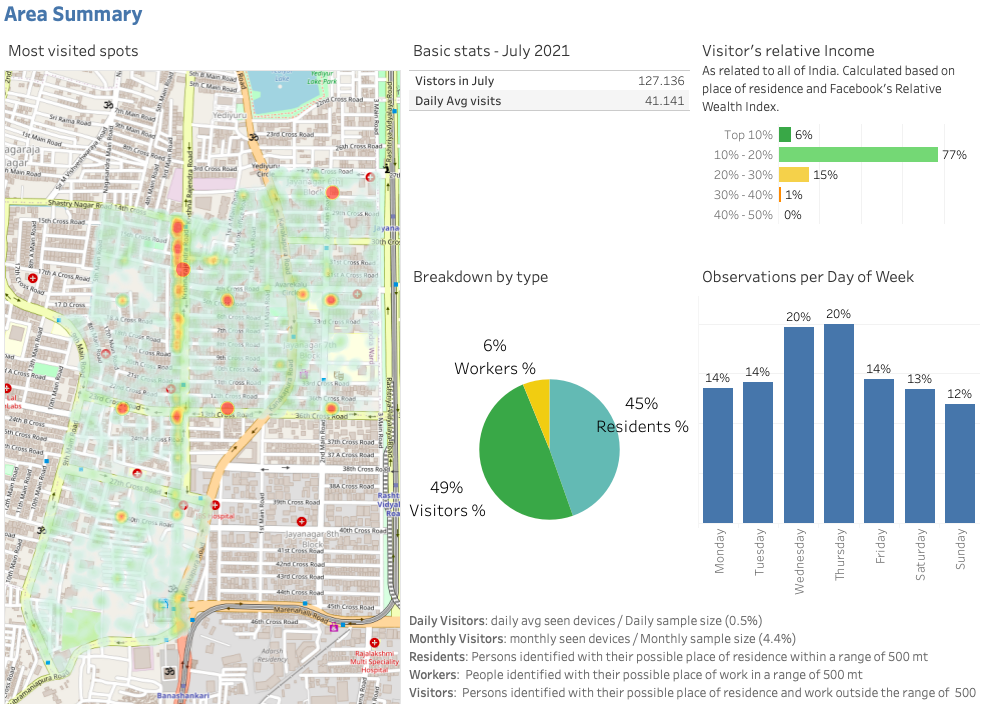By incorporating location intelligence into urban planning, it becomes possible to develop infrastructure adapted to the needs of citizens, enhancing living conditions in any given city. In addition, spatial data helps to optimize costs and prioritize government administration projects.
What does location intelligence provide to urban planning?
This data-driven technique provides information on how people move around metropolitan areas. The popularity of different destinations, when people tend to visit certain places, what kinds of transportation they use, and how long it takes people to get from one place to another are just some of the insights that can be obtained thanks to this tool.
Also Read: “Foot traffic analytics for urban mobility solutions“
Location intelligence applied in smart cities enables urban planners to improve feasibility, better optimize transportation systems, plan future mobility projects, and provide more efficient and faster solutions.

What uses can governments and administrations expect from location analytics?
- Evaluate existing infrastructure using factors such as the degree of usage of public transport systems, as well as the places and times when these systems are vulnerable to saturation.
2. Planning for future transportation options by considering new transportation offerings or alternatives, introducing more energy-efficient and/or environmentally friendly modes of transportation, and increasing access to essential services for underserved communities.
3. Locate essential services closer to citizens by building essential services close to areas frequented by citizens, allowing essential services to serve citizens more efficiently so that access to is more convenient and less time-consuming.

4. Model the impact of regulation on mobility through administrative changes in transportation, determining where cities should introduce changes in speed limits, traffic cameras, police patrols, parking rules, etc.
5. Minimize disruptions caused by construction activities by understanding how people arrive and where they travel, helping to minimize the effect of these disruptions, making it easier for people to take alternative routes to the ones they are used to.
6. Prepare essential locations for changes in foot traffic in response to crises by identifying points of interest that people visit most frequently in the event of a disaster, such as hospitals, grocery stores, gas stations, etc., allowing for modeling several changes if an emergency temporarily disrupts the flow of traffic.
7. Improve the design of transport service infrastructures, parking spaces, or intersections with the least possible environmental impact.
8. It provides urban planners with detailed information about the preferences and interests of the city’s residents and visitors, and thereby design spaces that take into account the unique needs of each community.

9. Improve site selection for urban revitalization, creating a better understanding of the needs of residents and visitors, resulting in generating more resilient communities that are better places to live and work.
10. Keeping pace with economic activity by providing timely insight into how it affects consumer behavior.
Smart city governments are beginning to see that modeling and forecasting based on urban human mobility data are fundamental to their planning, as it facilitates city circulation, keeps citizens safe, and provides great benefits for transportation and planning.
At PREDIK Data-Driven we help cities to develop their urban planning by generating innovative solutions through Big Data and location intelligence techniques.

